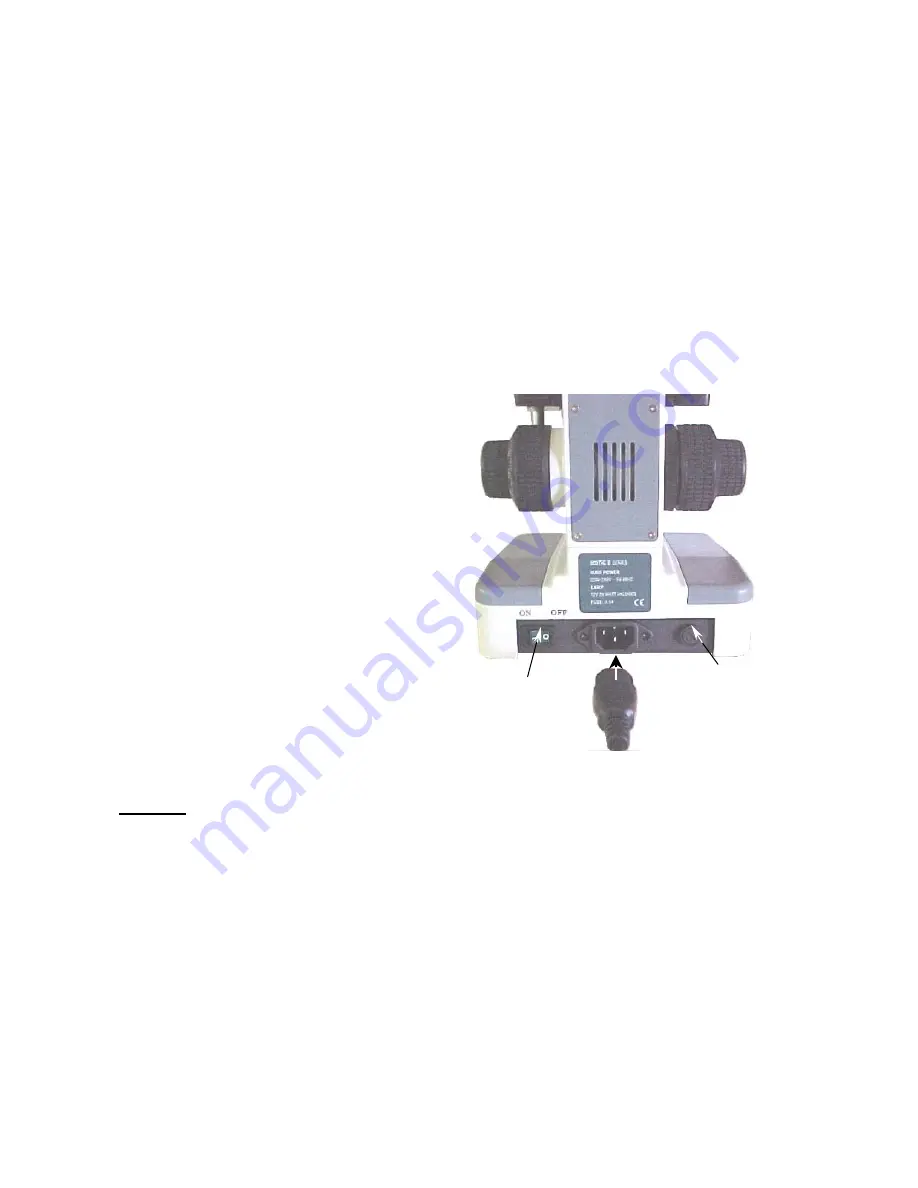
B. Specimen Holder Mechanism (6): Turn the Coarse Focus Knob (20) until the stage (8) reaches its
lowest position. Unscrew the two knurled locking screws (18) of the specimen holder mechanism.
Place the mechanism on the stage with the moveable finger lever facing upwards (5) so that the
holes of the mechanism line up with the locking screws. Firmly screw the screws back into place.
C. Objectives (4): Ensure that the revolving nosepiece (3) is well positioned: i.e. that it does not revolve
freely, but rotates until a “click” is heard, showing that it is secure in place. Place objectives, starting
with the lowest magnification 4X in any of the holes in the revolving nosepiece. Next, place that of
the second lowest magnification 10X in the hole alongside, and so forth: the 40X objective, and
finally the 100X objective can be placed.
D. Head (15): Loosen the knurled locking screw on the head and remove the protective cover on the
collar where the head is placed. Insert the head, until it is well supported on the stand (17). Although
the head can be placed in any position, we recommend for your comfort that the eyepiece tubes (14)
face forward on the microscope. Firmly re-tighten the knurled locking screw.
E. Eyepieces (1): Remove the protective covers on the eyepiece tubes (14). Gently place the eyepieces
in the tubes without touching the lens surface.
•
B1-211 and B1-212: Remove the
protective cover on the eyepiece tube.
Using a jewellers screwdriver, loosen the
tiny screw situated on the lateral of the
tube. Gently, and without touching the
surface of the lens, place the eyepiece in
the tube. Re-tighten the locking screw on
the eyepiece.
F. Filter: Swing out the filter holder horizontally
and place the blue filter in the filter holder
(11) located under the condenser (10). Make
sure that the filter is well positioned.
G. Power cable: Insert the power cable in the
connector at the lower back of the
microscope. (Fig. 1)
On switch
Fuse
Fig. 2
Warning: Before connecting the microscope to a
power source, check that the voltage coincides with
that on the microscope.
Operation
A. Starting
up.
1. Before using the microscope, adjust the light intensity control (23) to minimum position. This
should be repeated every time the microscope is switched on or off to prolong the use of the
bulb.
2. Press switch to ON position. (Fig. 2)
3. Turn illumination control until the image is illuminated.
4. Light intensity must be adjusted according to the objective used, or the type of preparation to
be observed.
-5-






























